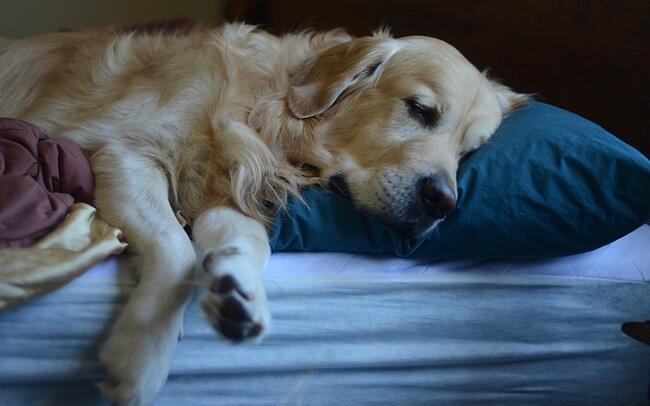
First, don’t lock them up. If your pet is feeling separation anxiety, locking them away from a certain area of the house does not eliminate the issue. Cats and dogs enjoy looking outside so find a place where they can watch squirrels and cars; if they can be destructive while you are out, find a way they can be sectioned off in a portion of the house. But don’t shift from working from home on a Monday to locking them up on a Tuesday. For some, it has been months of a new norm with you by their side all day.
When heading back to work, your pet may need to slowly ease back to a routine alone. Dogs and cats need a lot more sleep than humans so find a way to reward them when they are relaxing. We normally only think of treating our pets when they listen, but keeping a relaxing pet happy and calm can help the transition. Think of a special treat for relaxed behavior.
Create a routine with bedtimes for not only the kids but for the whole family. Pets thrive best in a routine. Set a time for them to be walked and fed in the early morning. Helping them use their energy prior to you leaving the house helps them prepare versus becoming distressed. Set time aside after work to play and pay attention to your pets. Cuddle and pet them at night so they know you will always come home.
As you are preparing to leave, give them a favorite toy or long-lasting chew to settle their nerves. Start the morning calmly easing your way out of the door.
Gradually move back to a routine while keeping some new morning rituals you have established. Load up the car and kids and come back to reassure your pet you are coming back. Go for a light walk or jog leaving your dog alone for 20 minutes. Build up the time you leave slowly.
If you are on the fence about how to jump back into the routine with your sleep schedule and your pet, there are benefits to co-sleeping according to the American Pet Products Association. Each may increase the likelihood of your sleep schedule going back to normal and your pet from feeling comfortable with separation during the daytime.
Any cuddle bugs known on a cold night snuggling up with a partner or pet provides an increase in body temperature. And with dogs, are about 3-6 degrees warmer compared to humans. Think of your dog as a portable electric blanket.
A report in Sleep Review found the rhythmic breathing of their dog helped with insomnia. The presence of a dog in the life of an individual going through a stressful time promotes comfort and safety. This translates into insomnia cases as well.
For many, the unconditional love of a dog helps patients with mild cases of depression to the point that their pet stays by their side at all times in the house including in the bedroom. A consistent presence of affection from a dog is sometimes a good starting point for those dealing with depression symptoms.
The emotional bond between a dog and its human can be inseparable. If a child in the house becomes the co-sleeper, they normally will be the favorite child as the dog feels safe and comforted in their presence. The same goes for any co-sleeper.
The reason many people, especially singles, adopt a dog in the first place is for safety. With a dog by your side, you are not alone and feel comforted. Remember the same applies for your pet: you are their world so make certain you help them feel relaxed and loved.
Hopefully, these tips can help you determine the best option for you as a dog owner when heading back to work. However, there is still always a chance your sleep disruptions are truly insomnia or sleep apnea. Our sleep specialists at The Alaska Sleep Clinic can talk for free to get you back on track for a full night’s rest.












